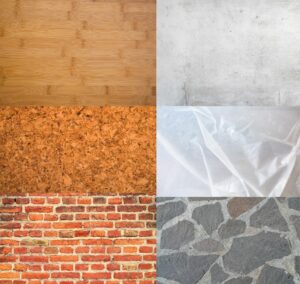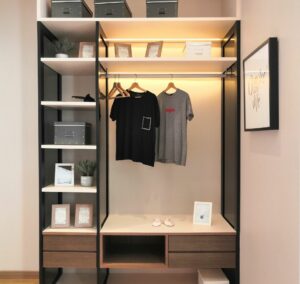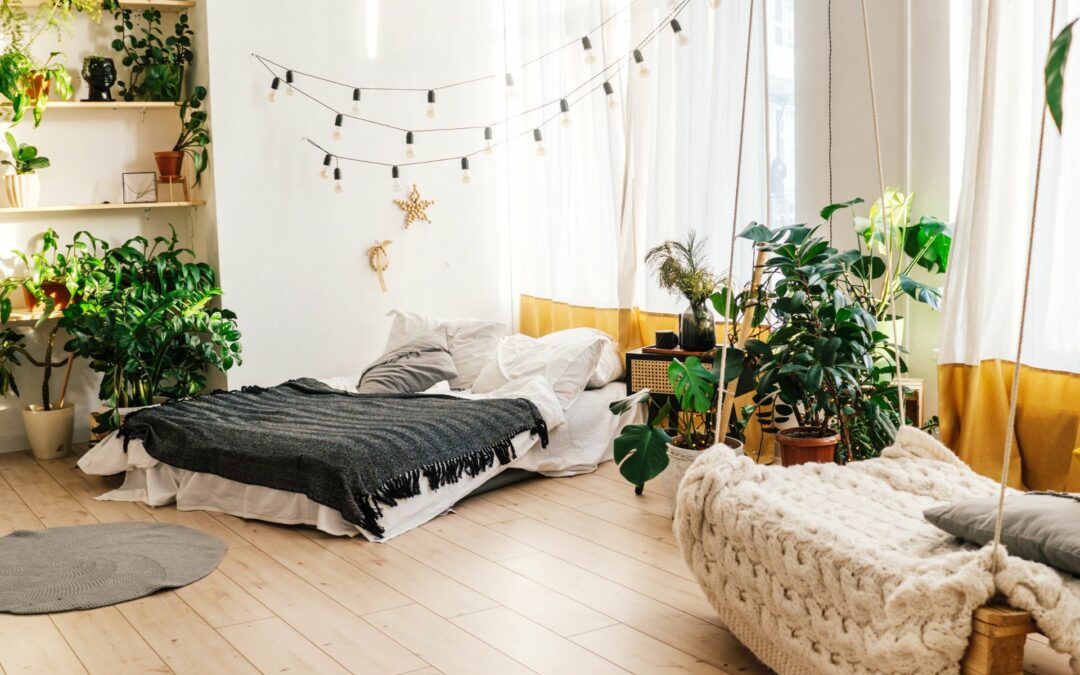Do you want to do your part to heal the planet and reduce your carbon footprint? Are you curious about how you can incorporate sustainable practices into the interior design of your home? The good news is that the answer to both these questions can be yes if you consider five sustainable interior design ideas.
Green vs. Sustainable Interior Design
Before you can dive into sustainable interior design ideas, it’s important to understand the distinction between green interior design and sustainable interior design. At first glance, it’s easy to assume that these terms are synonymous. According to the San Diego Institute of Design, they differ in a very significant way.
Green interior design refers to mainstream environmentally conscious design practices that satisfy the bare minimum. Sustainable interior design, on the other hand, involves going above and beyond the bare minimum set by green interior design. Now that you understand how green and sustainable interior design is different let’s take a closer look at five sustainable interior design ideas to consider for your home.
5 Ideas For Sustainable Interior Design
There are countless ways to incorporate sustainable interior design into your home. Here are just four ideas to think of using:
1. Salvaged, Or Sustainable Materials
The first idea to consider for sustainable interior design is to use salvaged or sustainable materials in your home. However, just as there is a difference between green and sustainable interior design, salvaged and sustainable materials are also their own distinct categories. Also known as reclaimed, reused, or recycled materials, salvaged materials include anything building material leftover from a construction or demolition project. It can also include any leftover construction materials, saving them from being completely wasted.
Sustainable materials refer to construction material sources that are renewable, durable, and environmentally friendly. Bamboo is one of the most notable examples of a sustainable material. Bamboo is deemed sustainable or renewable because, unlike lumber, it’s very easy to grow and regrow and does not cause soil damage when harvested. Other sustainable materials include concrete, mycelium, stone, cork, brick, and many more. Incorporating salvaged and or sustainable materials into your home’s interior design is just one way to make your home eco-friendly.

2. Energy-Efficient Appliances
Another approach to sustainable interior design is to install energy-efficient appliances in your home. In this case, using energy-efficient appliances means using appliances that are known to be high-performing and long-lasting since appliances themselves are hard to recycle. This way, you can use appliances that will be durable in the long run and avoid wasting time and money on faulty systems. You can also consider appliances that are deemed water-efficient and items that easily provide insulation so that you aren’t wasting water or using too much energy to keep your home warm or cool.
3. Buying Secondhand To Reduce Waste
Instead of spending money on buying furniture and decorations that are completely new, consider buying secondhand items to adorn your home interior. These can be antique or vintage items, such as furniture, that have been repurposed or refinished. Instead of letting something go to waste, you can give it a new lift by including it in your sustainable interior design vision.
4. Sustainable Lighting
If you like to light up your home but also want to reduce your carbon footprint, then consider using sustainable lighting. Sustainable lighting includes using light sources that don’t use up as much energy as traditional lighting, as well as designing your home in a way to make it more receptive to natural lighting. One notable source of sustainable lighting is LED lights. They reduce carbon emissions by 75%, making them an ideal choice for home lighting. You can also remodel parts of your home design to take advantage of natural sunlight to warm up and brighten your home.

5. Use Brands That Are Transparent About Sustainable Practices
Finally, one of the most important practices for sustainable interior design is to research the brands you are using. Find brands and chains that are transparent about how and where their products are made and treat their labor force ethically. Brands and chains that have been certified by outside groups to abide by these ethical and sustainable practices are a great place to start. Some certifications to look out for when finding these brands and chains include Cradle to Cradle, Fair Trade, Greenguard Gold, ISO 9001, and so many more.
Use Prime Remodeling For Your Next Interior Design Project!
You are now familiar with five out of many possible sustainable interior design ideas that’ll make your home more eco-friendly than before. If you want to get started on remodeling your home to meet sustainable standards, you’ll need the best remodelers to make your vision a reality. The good news is you can contact us at Prime Remodeling to get the best results from your next interior design project.

